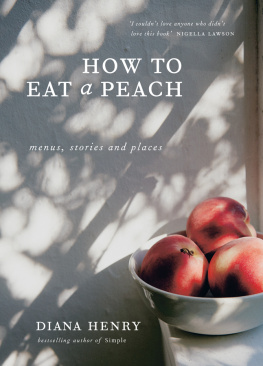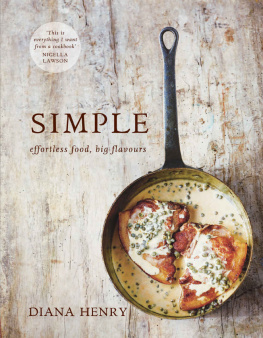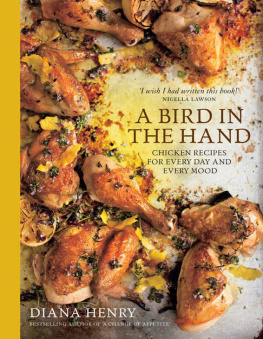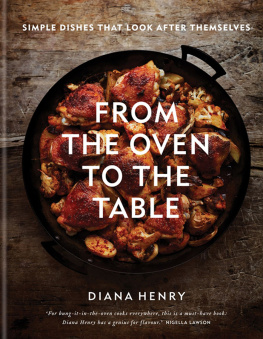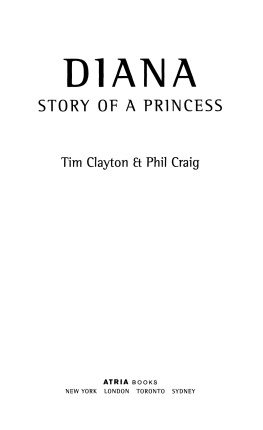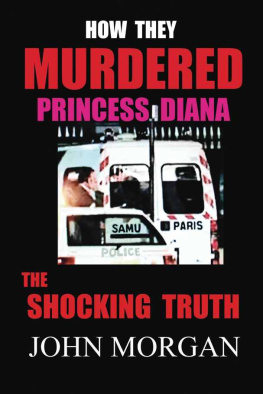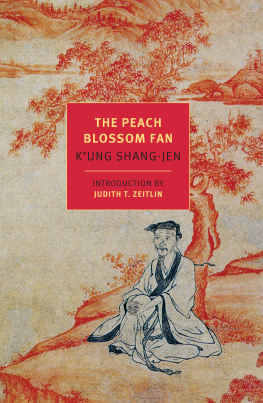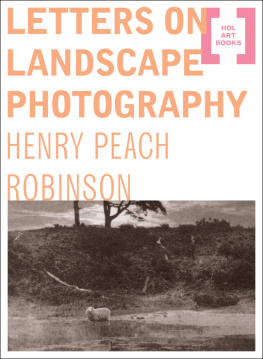Diana Henry - How to Eat a Peach
Here you can read online Diana Henry - How to Eat a Peach full text of the book (entire story) in english for free. Download pdf and epub, get meaning, cover and reviews about this ebook. year: 2018, publisher: Octopus, genre: Home and family. Description of the work, (preface) as well as reviews are available. Best literature library LitArk.com created for fans of good reading and offers a wide selection of genres:
Romance novel
Science fiction
Adventure
Detective
Science
History
Home and family
Prose
Art
Politics
Computer
Non-fiction
Religion
Business
Children
Humor
Choose a favorite category and find really read worthwhile books. Enjoy immersion in the world of imagination, feel the emotions of the characters or learn something new for yourself, make an fascinating discovery.
- Book:How to Eat a Peach
- Author:
- Publisher:Octopus
- Genre:
- Year:2018
- Rating:4 / 5
- Favourites:Add to favourites
- Your mark:
- 80
- 1
- 2
- 3
- 4
- 5
How to Eat a Peach: summary, description and annotation
We offer to read an annotation, description, summary or preface (depends on what the author of the book "How to Eat a Peach" wrote himself). If you haven't found the necessary information about the book — write in the comments, we will try to find it.
How to Eat a Peach — read online for free the complete book (whole text) full work
Below is the text of the book, divided by pages. System saving the place of the last page read, allows you to conveniently read the book "How to Eat a Peach" online for free, without having to search again every time where you left off. Put a bookmark, and you can go to the page where you finished reading at any time.
Font size:
Interval:
Bookmark:





When I was sixteen I started to keep a book of menus, a school exercise book Id carefully covered in wrapping paper. This was an odd obsession, because I didnt cook most of the menus I created; I wouldve needed a restaurant to get through them all. The pleasure was in putting the menus together, thinking long and hard about what dishes worked.
I still have the book. Most of the meals are simple: cucumber salad with dill and sour cream, goulash, baked autumn fruit; crudits (the kind Id had in France), poulet bonne femme, galette aux pommes. There arent any dishes from some of the cuisines I now love Middle Eastern or Vietnamese, for example but there are a few old-fashioned, embarrassingly complicated menus I wouldnt dream of attempting these days: buckwheat blinis with warm melted butter, sour cream and smoked salmon; guinea fowl breasts in pastry with mushrooms duxelles and Madeira sauce; Grand Marnier souffl. I did actually cook this. Was I mad?
My parents didnt have dinner parties. They gave parties, though. These werent formal, you were invited verbally (Come on over. Were having a few people in.) They were about good craic, drinking Bushmills whiskey and Vat 69 and dancing to Nancy Sinatra. My mum prepared wonderful food, dishes that would be laid out, buffet-style, on the big dining table. She thought about what worked together. She was going to cookery classes (she was always going to cookery classes) and made dishes that were, for that time, exotic: braised pork with peppers and paprika, slaw with caraway seeds, an Austrian coffee cake that was soaked in booze. Some of the recipes came from her classes, others from the Cordon Bleu part work she was collecting (and which I pored over at night until my eyes hurt). From these parties, as well as from the pages of Cordon Bleu, I got the idea that having people round to eat wasnt just about food, but about creating an event, an atmosphere.
I gave my first dinner party soon after I started keeping my menu book. My school friends were bemused by the candlelit room (Id gone over the top). Are we going to celebrate mass? one asked. And they didnt quite get the pineapple water ice (What is this?) but I continued, undaunted. I loved having people over but, even more, I loved putting a menu together.
Years later I discovered Alice Waterss Chez Panisse Menu Cookbook, a thrill for the menu fanatic. The book contains recipes, of course, but its also an archive of menus served at Chez Panisse restaurant in Berkeley, California. The place was unusual, especially for that time, in that it offered only set menus. Set menus were and are common in France but, when Alice started serving them in the 1970s, they were not the norm either in America or Britain. As Chez Panisse was run mostly by people who werent trained chefs, it made sense to offer the same food to everyone they couldnt have managed a big la carte menu and I was fascinated by the meals theyd put together. It wasnt restauranty, it was like the food a very good and thoughtful home cook would make. When I moved to London in the mid-1980s, I soon learned that Clarkes restaurant owned and run by Sally Clarke, who had worked at Chez Panisse also offered set menus. I used to get on the tube on a Monday night to go and see what Sally had planned for the week. Id stand there, sometimes in the rain, with a little torch, writing down her menus in a notebook. I rarely ate at Clarkes (I was in my first job and it was expensive), but I felt as if I ate there all the time.
Composing a menu is still my favourite bit of cooking. I dont invite people round and then wonder what Ill cook, I come up with a menu and then consider who would like to eat it.
Why did I decide to write a whole book of menus, when people can compose their own? Because I get more questions about menus than about anything else. Friday nights and Saturday mornings bring endless phone calls and texts. Friends, preparing meals for Saturday night, have decided on a main course but dont know what to have for pudding (puddings are nearly always an afterthought), and everybody wants a quick starter. Will these dishes work together? is something Im always being asked.
There are some practical rules about menus, though theyre open to being bent, even completely broken. Youll pick up more throughout the book, but here are my basic guidelines. Ideally, no more than two courses should be cooked at the last minute, otherwise youll be stressed. (This rule can be dispensed with if you are one of those cooks who can deep-fry while making sparkling conversation with twelve people. I am not one of those cooks.)
A meal shouldnt be too rich: cream should only appear in one course (though you can always have it with pudding). Its not ideal to repeat ingredients. In general, if I start with fish, it wont appear again (though I break this rule, as youll see). Consider colour, texture and temperature and it almost goes without saying eat seasonally.
Make sure your guests arent going to be full by the end of the first course (the Australian restaurateur, Gay Bilson, has written that the appetite should be piqued as you eat, rather than sated).
Most of the menus in this book contain three courses, though some have five, while others are made up of dishes that are all served at the same time. I love mezze and tapas you get to taste so many different things and I understand the modern desire for small plates, but I still cleave, mostly, to the notion of a meal that progresses from one course to the next, however recent, in historical terms, that idea is.
I often start meals with a salad, because its such an appetite-opening way to begin, but you dont need a starter at all. You can always begin with things guests can pick at: radishes, charcuterie, olives. Radishes with quails eggs and tapenade or just with good bread, butter and salt is my go-to opener. Then there are crudits. These are not the sorry flaccid raw-vegetables-plus-dip that you see in supermarkets, but the small array of vegetable salads carrottes rapes, lentilles en salade, leeks vinaigrette that the French serve.
A main course doesnt have to be a hunk of protein with side dishes, it can be about the same size as the starter, and it doesnt have to be meat- or fish-based at all. The vegetarian menus in the book are there quite by accident, not because I tried to include vegetarian-friendly options. Soup is hard to fit into any dinner (its just too filling), but lunch can be built on it. I love a plain leaf salad after the main course and, though it only appears once in this book, you can slot them into any meal. It was one of the things I came to appreciate on my first trip to France and became almost my favourite part of every meal; it was cleansing and refreshing and provided a kind of interlude. But the leaves have to be good, and good leaves dont come pre-washed in a bag. Buy proper lettuce in heads; depending on the variety it will keep in the fridge for days (especially curly endive, chicory and Baby Gems). Wash what you need, dry the leaves thoroughly and make a good vinaigrette, by which I mean taste it as you make it. There are agreed general proportions for vinaigrette, of course, but they will vary for each one you make, depending on the vinegar and the oil you are using, as well as the leaves you are dressing.
Font size:
Interval:
Bookmark:
Similar books «How to Eat a Peach»
Look at similar books to How to Eat a Peach. We have selected literature similar in name and meaning in the hope of providing readers with more options to find new, interesting, not yet read works.
Discussion, reviews of the book How to Eat a Peach and just readers' own opinions. Leave your comments, write what you think about the work, its meaning or the main characters. Specify what exactly you liked and what you didn't like, and why you think so.

